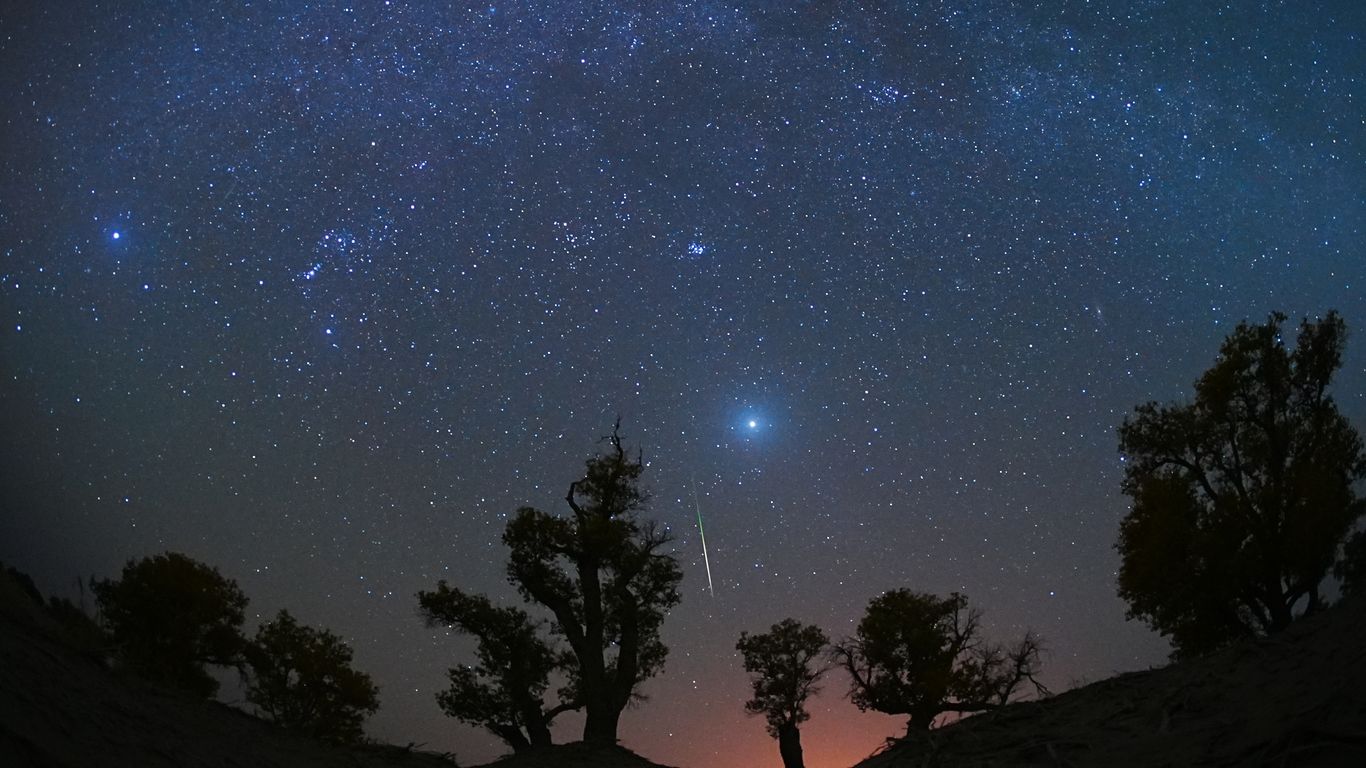
""Come prepared with a sleeping bag, blanket, or lawn chair," NASA says. "Lie flat on your back with your feet facing southeast if you are in the Northern Hemisphere or northeast if you are in the Southern Hemisphere, and look up, taking in as much of the sky as possible.""
"'Fast meteors can leave glowing 'trains' (incandescent bits of debris in the wake of the meteor) which last for several seconds to minutes,' per NASA. 'Fast meteors can also sometimes become fireballs: Look for prolonged explosions of light when viewing the Orionid meteor shower,' the space agency notes. 'The Orionids are also framed by some of the brightest stars in the night sky, which lend a spectacular backdrop for these showy meteors.'"
"'Viewing conditions will be excellent this year,' with Tuesday's new Moon ensuring 'dark skies with no lunar interference during the early morning hours,' the society says. 'If skies are cloudy, check again on following mornings - Orionid activity remains strong for nearly a week.'"
Find an area well away from city or street lights to maximize visibility. Bring a sleeping bag, blanket, or lawn chair and lie flat on your back with feet facing southeast in the Northern Hemisphere or northeast in the Southern Hemisphere while looking up to take in as much sky as possible. Allow eyes to adapt for less than 30 minutes to begin seeing meteors. Peak viewing is Wednesday into Thursday, with the best time from midnight until dawn. Observers in dark rural areas could see up to 20 meteors per hour. New Moon provides dark skies; cloudy nights may require checking subsequent mornings. Orionids travel about 41 miles per second, can leave glowing trains lasting seconds to minutes, and sometimes become fireballs against a backdrop of bright stars.
Read at Axios
Unable to calculate read time
Collection
[
|
...
]